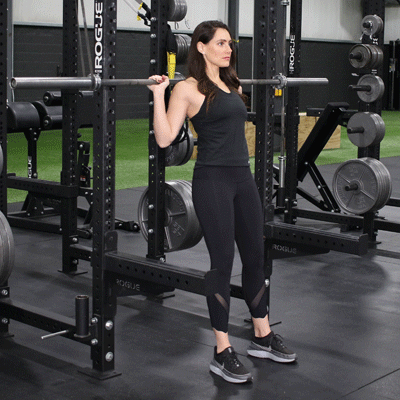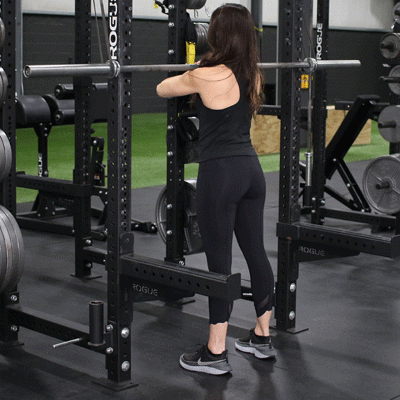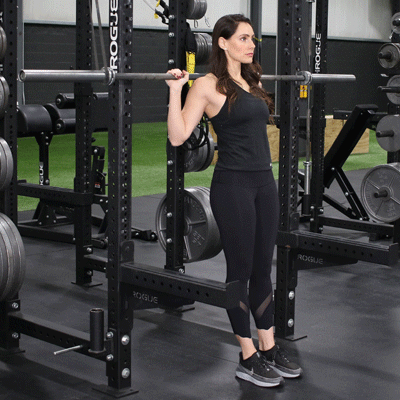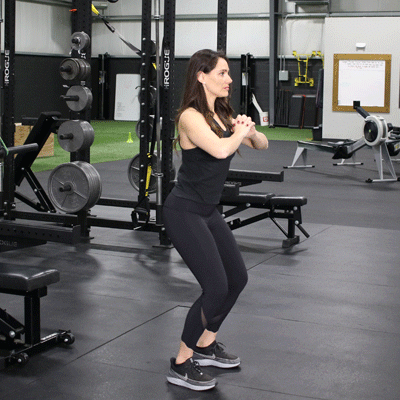Craving shapely, powerful legs? Don’t sleep on the hack squat — it might be exactly what your routine needs.
The hack squat targets the whole lower body — the glutes, hamstrings, quads, and calves — while also engaging the core. Because it emphasizes the quadriceps, you’ll definitely feel the front of your thighs after a session.
What’s the benefit?
The hack squat is an excellent way to develop leg strength, particularly if you’re new to squatting.
The slanted machine supports you in a near-standing position, stabilizing the load so your legs can drive the motion safely.
If your goal is to build bigger, stronger quads, add hack squats into your program.
Who should avoid it?
If you suffer from lower-back or knee issues, the hack squat is often not advisable.
Even though the machine offers some stabilization, your joints still take on stress, which could worsen preexisting conditions.
How does it differ from a barbell squat?
Both hack squats and barbell squats hit the quads hard, but they’re not identical.
A barbell squat is usually done in a rack with the bar resting across your shoulders behind your neck, moving straight up and down.
Unlike the hack squat, the barbell squat doesn’t give machine-assisted stabilization, so your upper body, hips, and core must work harder to control the lift.
For that reason, you’ll typically be able to handle less load with a barbell than on the hack squat machine.
The hack squat can serve as a helpful stepping stone toward the traditional barbell squat.
Once you’ve built confidence in the mechanics of the hack squat — driving through the heels and hinging the hips — try transitioning to barbell squats.
If you already squat with a barbell comfortably, use the hack squat to safely push heavier loads.
How to perform the hack squat

The hack squat requires a machine, so you’ll likely need gym access.
Follow these steps to get started:
- Set the machine to the weight you want. If you’re new, first familiarize yourself with the machine’s motion before piling on plates.
- Step into the machine, position your feet shoulder-width apart, and press your shoulders and back against the pads.
- Release the safety catches, inhale, then descend by bending your knees until they form roughly a 90-degree angle.
- Pause briefly, then drive upward through the heels to return to the starting position.
Begin with 2 sets of 10–12 reps, progressing to 3 sets. When that becomes too easy, increase the weight.
How to slot it into your program
Include the hack squat in any leg-focused session as a strong complement to squats and deadlifts. Combine it with three to five other lower-body movements and you’ll be on track for stronger, leaner legs.
Always warm up adequately before heavy lifting: 5–10 minutes of low- to moderate-intensity cardio followed by dynamic mobility work will prepare your legs and joints for loading.
Keep your muscles and joints mobile before you start adding plates.
Common errors to avoid
Although the hack squat is friendly for beginners, watch for a few frequent mistakes.
Foot placement
Place your feet about shoulder-width apart and avoid putting them too high on the footplate.
You might be tempted to set your feet higher and wider to target the quads more, but sticking to shoulder-width is safer and more effective.
Loading too quickly
The goal is to reach a 90-degree knee bend. If you load the machine excessively, you’ll struggle to hit that depth with proper form.
Prioritize technique first, then gradually add weight.
Variations to try
There are a couple of hack squat variations you can experiment with to shift emphasis and feel.
Reverse hack squat

For a reverse hack squat, face the machine’s pads. Position your chest against the backrest and tuck your shoulders under the shoulder pads.
With the same shoulder-width stance, lower until your thighs are parallel, then drive through your heels to rise back up.
This setup shifts more load onto the glutes.
Narrow hack squat

Set up just like a standard hack squat, but bring your feet closer together than shoulder-width.
Still drive through the heels on the ascent. This narrower stance places extra focus on the quads.
Barbell hack squat option
If you don’t have a hack squat machine or want to try something different, there’s a barbell hack squat variant.
This is more advanced because it requires enough upper-body strength to hold a weight that challenges the legs — which can be tough for novices.

Start with a light barbell.
To perform it:
- Grip the barbell with arms extended behind your back. Your hands and feet should be shoulder-width apart.
- Keep your chest lifted and squat back and down until your thighs are parallel, letting the bar descend as you move.
- Push through your heels to stand back up to the starting position.
Alternatives if you don’t have access to the machine
If a hack squat machine isn’t available, try the leg press or a traditional squat as solid substitutes.
Both alternatives emphasize the quads much like the hack squat does.
Leg press

The leg press takes some demand off the upper body, concentrating the effort on the legs.
Bodyweight squat

A traditional bodyweight squat demands more from your upper body and core compared with the hack squat and leg press. You’ll likely lift less, but you’ll recruit more supporting muscles in the process.
Final takeaway
The hack squat is an effective tool for building leg strength, with a particular emphasis on the quads. You can switch up variations to target different muscles and use it as part of your leg-day arsenal. Add hack squats to your routine and keep progressing.


















Leave a Reply
You must be logged in to post a comment.